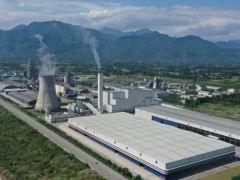据油价网2021年7月22日报道,美国石油和天然气行业正在从去年的市场低迷中逐步复苏。 但与以往的盛衰周期不同的是,美国油气行业一直在推迟提高产量,而专注于加强资产负债表、偿还贷款和回报股东。 由于今年大宗商品价格上涨,以及最重要的资本支出纪律,美国页岩探区现在的财务状况变得更强。 近几个月来,破产数量减少,而且破产间隔也大大缩短,能源贷款违约率已降至去年3月和4月石油市场崩溃以来的最低水平。
此外,低利率促使许多美国石油和天然气公司筹集新债务,其中大部分用于偿还现有债务,而不是钻探更多井。
美国能源行业违约大幅下降
一项指标显示,近几个月来,美国石油和天然气行业的贷款和债券的信贷质量有了显著改善。
惠誉国际评级7月21日在一份报告中称,7月份美国能源行业过去12个月的违约率为9.1%。 能源行业违约率自去年4月以来首次降至两位数以下。 惠誉国际评级指出,7月份能源行业违约率也从3月份20.3%的峰值大幅下降。
惠誉国际评级表示,较低违约和较高油价将进一步推动能源行业违约率在今年年底前降至5%。 惠誉国际评级的数据显示,与去年规模超过15亿美元的发行机构多达4起违约相比,今年的违约规模将会较小。
相比之下,去年这个时候,惠誉国际评级估计,截至去年的能源行业违约率为18%。 仅在去年第二季度,能源行业就产生了50亿美元的违约。
惠誉国际评级预计,“未来几个月不会有很多破产”。 惠誉国际评级杠杆融资高级主管埃里克·罗森塔尔告诉《福布斯》资深撰稿人Mayra Rodriguez Valladares:“我们的最关注市场贷款中只有2%与能源有关。”
惠誉国际评级的数据显示,今年能源行业债券违约率也大幅下降。
罗森塔尔告诉Rodriguez Valladares,“能源债券仅占我们最关注市场债券的10%,低于一年前的57%。到目前为止,只有32亿美元的高收益能源违约,而去年同期为144亿美元。
能源企业破产速度放缓
由于债务不可持续的公司已经在过去一年申请破产,而其他公司则在用创纪录的现金流偿还债务,今年能源行业违约率将大幅下降。
今年第一季度北美生产商申请破产保护的数量达到了2016年第一季度以来的最高数量,然而破产速度显著放缓,自去年第二和第三季度达到峰值以来,破产浪潮已明显放缓。美国律师事务所haynes and Boone 在截至3月31日的最新统计报告中说,尽管今年第一季度破产的数量高于自2016年以来的第一季度,在去年第二季度和第三季度分别有18家和17家石油和天然气生产商提交破产保护申请以后,申请数量呈放缓趋势,负债累累的生产商在这两个季度里受到石油价格暴跌和负债危机最严重影响。
美国页岩探区企业将再次举债
美国石油和天然气公司正利用高油价和历史低位利率寻求融资。
美国能源信息署(EIA)4月份曾称,油价上涨和低利率促使美国独立上市石油生产商在3月通过债券和股票发行融资,创下去年8月以来的最高纪录。
这一次,借入的资金见被用于偿还先前提取的信贷安排或债券,而不是用于无休止地钻探新井和追逐创纪录的产量增长。
EIA表示:“自原油价格开始上涨以来,美国原油生产商一直在通过举债和股权融资来为债务再融资、恢复钻井活动或购买新探区。”
EIA指出,低企业债券利息也有助于降低新债泉利率,降低新债券发行成本。
历史上低利率给了美国页岩钻井公司额外的激励,促使他们增加新的债务并为现有债务再融资。 据彭博情报称,目前美国能源部门发行新债券的成本与7年前一样低,而当时油价为每桶100美元。
资本纪律将维持多久?
正如石油巨富哈罗德•哈姆在2017年警告的那样,今年到目前为止,美国油气公司一直坚持资本纪律的承诺,他们更愿意向投资者展示资金,让自己“被遗忘”。
油价上涨和预计将创纪录的现金流有望在今年修复许多页岩生产商的资产负债表。
挪威雷斯塔能源公司在7月早些时候的一份分析报告中表示,即使美国页岩想要大幅提高产量以应对每桶70美元的油价,他们也需要至少9个月的时间才能看到产量的显著增长。
在评论6月底发布的《第二季度达拉斯联储能源调查》报告以后,一家勘探和生产公司的高管可能总结了今年美国页岩探区的座右铭:
“别上当,钻井商:坚持资金纪律以及享受你们产品的更高价格。”
李峻 编译自 油价网
原文如下:
U.S. Shale Sees Light At The End Of The Tunnel
The U.S. oil and gas sector is recovering from last year’s market slump. But unlike the previous boom-and-bust cycles, the industry has held off on boosting production and has focused on strengthening balance sheets, repaying loans, and rewarding shareholders. As a result of the rallying commodity prices this year, and most of all, the discipline in capital spending, the U.S. shale patch is now financially stronger. Bankruptcies have been fewer and far apart in recent months, and the energy loan default rate has dropped to the lowest level since the oil market crashed in March and April last year.
In addition, low interest rates have prompted many U.S. oil and gas firms to raise new debt, most of which goes to repaying existing liabilities, not to drilling more wells.
U.S. Energy Defaults Drop Significantly
One indicator shows that the credit quality of the loans and bonds in the U.S. oil and gas sector has significantly improved in recent months.
The energy sector’s trailing twelve-month (TTM) default rate stood at 9.1 percent in July, Fitch Ratings said in a report on Wednesday. The energy default rate has fallen below the double-digit percentage for the first time since April 2020. The default rate is also considerably down from the 20.3-percent peak in March, Fitch Ratings noted.
Smaller defaults and higher oil prices are set to further push the energy default rate down to 5 percent by the end of this year, the rating agency says. This year will see smaller defaults compared with as many as four defaults of $1.5 billion-plus size issuers in 2020, according to Fitch Ratings.
To compare, at this time last year, Fitch Ratings was estimating the energy default rate to finish the year 2020 at 18 percent. In the second quarter of 2020 alone, energy generated $5 billion of defaults.
This year, Fitch Ratings does not expect “many bankruptcies coming in the next few months. only 2% of our Top Market Concern Loans relates to energy,” Eric Rosenthal, Senior Director of Leveraged Finance at Fitch Ratings, told Forbes’ Senior Contributor Mayra Rodriguez Valladares.
Defaults on bonds have also significantly dropped this year, according to Fitch Ratings.
“Energy makes up only 10% of our Top Market Concern Bonds list, down from 57% as of one year ago. There has been only $3.2 billion of YTD high yield energy defaults compared with $14.4 billion for the same period in 2020,” Rosenthal told Rodriguez Valladares.
Energy Bankruptcies Slow Down
This year, the default rate is considerably down, as companies with unsustainable liabilities have already filed for bankruptcy over the past year, while the others are using record cash flows to pay down debts.
The number of North American producers that filed for bankruptcy protection in the first quarter of 2021 reached the highest number for a first-quarter since 2016, yet the wave of bankruptcies has significantly slowed since the peaks in the second and third quarter of 2020, law firm Haynes and Boone said in its latest tally to March 31. Even though the number of first-quarter 2021 bankruptcies was the highest for a Q1 since 2016, it showed the trend of slowing filings after 18 oil and gas producers filed in the second quarter of 2020 and another 17 in the third quarter, the two quarters in which the oil price crash and the crisis were most severely felt by indebted producers.
The U.S. Shale Patch Is Borrowing Again
U.S. oil and gas firms are taking advantage of the high oil prices and historically low-interest rates to seek financing.
Higher oil prices and low-interest rates have prompted listed independent U.S. oil producers to raise in March the most financing via debt and equity issues since August last year, the EIA said in April.
This time around, the borrowed money is being used for repayment of previously drawn credit facilities or bonds, not for relentless drilling of new wells and chasing record production growth.
“Since crude oil prices began increasing, U.S. crude oil producers have been raising debt and equity to refinance debts, resume drilling activities, or purchase acreage,” the EIA said.
Low corporate bond yields have also contributed to lower interest rates on new bonds and reduce the cost of issuing debt, the EIA noted.
Historically low interest rates give additional incentives to U.S. shale drillers to raise new debt and refinance existing liabilities. Currently, it’s as cheap for the U.S. energy sector to raise new debt as it was seven years ago, when oil was $100 per barrel, according to Bloomberg Intelligence.
How Long Will Discipline Hold?
So far this year, U.S. oil and gas firms have been sticking with promises of capital discipline and prefer to show investors the money to drilling themselves “into oblivion,” as Harold Hamm warned back in 2017.
Higher oil prices and expected record cash flows could heal the balance sheets of many shale producers this year.
Even if U.S. shale wanted to significantly raise production in response to $70 oil, it would take at least nine months to see a meaningful jump in output, Rystad Energy said in ananalysis earlier this month.
One executive at an E&P firm may have summed up this year’s motto of the U.S. shale patch in the following comment in the Dallas Fed Energy Survey Q2 published at the end of June:
“Don’t take the bait, drillers: Stay capital disciplined and enjoy the higher prices for your product.”
免责声明:本网转载自其它媒体的文章,目的在于弘扬石化精神,传递更多石化信息,并不代表本网赞同其观点和对其真实性负责,在此我们谨向原作者和原媒体致以敬意。如果您认为本站文章侵犯了您的版权,请与我们联系,我们将第一时间删除。







